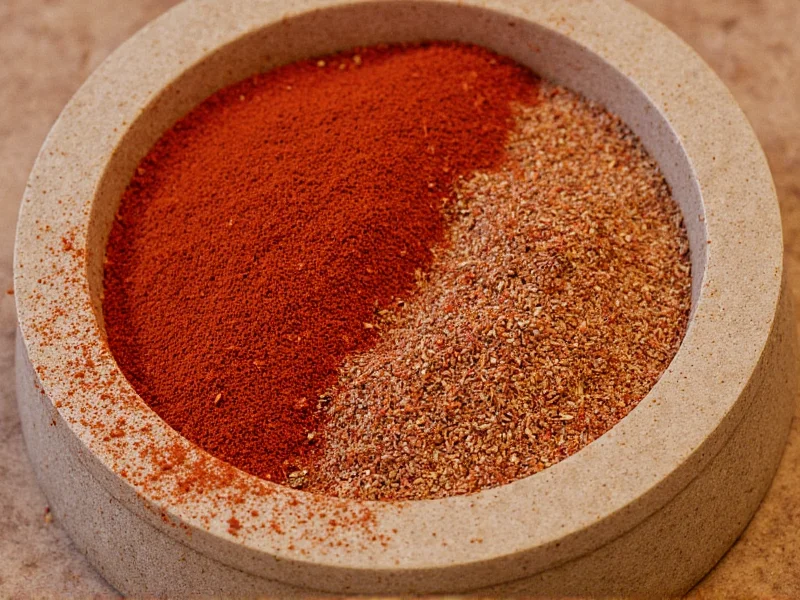Many home cooks and culinary enthusiasts searching for osmo seasoning are surprised to discover this product doesn't exist in the food industry. The confusion typically arises from two sources: misunderstanding the Osmo brand's actual purpose, and potential confusion with the scientific term osmosis which does relate to cooking processes.
Understanding the Osmo Brand Misconception
Osmo, founded in 2013 and acquired by BYJU'S in 2021, creates physical-digital learning systems primarily for children aged 3-12. Their products include:
| Product Category | Examples | Primary Use |
|---|---|---|
| Learning Games | Words, Coding, Pizza Co. | Educational play |
| Creative Tools | Masterpiece, Newton | Art and problem-solving |
| STEM Kits | Monster, Genius Kit | Science and math learning |
None of Osmo's product line includes food items, seasonings, or culinary tools. The company focuses exclusively on educational technology that bridges physical play with digital interaction using reflective AI technology.
Why the Seasoning Confusion Occurs
Several factors contribute to the osmo seasoning brand misconception:
- Similar-sounding terms: "Osmo" resembles "osmosis," a scientific process relevant in cooking (like brining meats or preserving vegetables)
- Autocorrect errors: Searches for "Ozmo seasoning" or "Osum seasoning" often get corrected to "Osmo"
- Voice search misinterpretation: Spoken queries like "What's a good osmosis seasoning?" may register as "osmo seasoning"
- Brand name confusion: Mixing up Osmo with actual seasoning brands like Mrs. Dash, Lawry's, or McCormick
Scientific Connection: Osmosis in Cooking
While osmo seasoning isn't real, the scientific principle of osmosis plays a crucial role in many culinary techniques:
- Brining meats: Salt solutions use osmosis to tenderize proteins and enhance flavor absorption
- Vegetable preservation: Pickling relies on osmotic pressure to draw moisture from vegetables
- Salt extraction: Drawing moisture from eggplants or cucumbers before cooking
- Syrup penetration: In fruit preserves, osmosis helps sugar penetrate fruit cells
Chefs sometimes refer to "osmotic seasoning" when discussing these processes, which may contribute to the is osmo seasoning real confusion. However, this describes a technique rather than a specific product.
Actual Seasoning Products You Might Be Seeking
If you're searching for quality seasonings, consider these legitimate alternatives that address common cooking needs:
| Seasoning Type | Purpose | Recommended Brands |
|---|---|---|
| All-purpose blends | General cooking enhancement | Penzeys, Spice Islands |
| Smoke-infused salts | Adding depth without liquid smoke | Hodges Bay, Jacobsen |
| Acid-based seasonings | Brightening flavors | True Citrus, Tajín |
| Umami boosters | Adding savory depth | MSG, mushroom powder |
How to Identify Quality Seasoning Products
When selecting seasonings, look for these indicators of quality that address common osmo seasoning alternative needs:
- Ingredient transparency: Products listing specific components rather than "spice blend"
- Origin information: Reputable brands disclose where spices are sourced
- Grind consistency: Uniform particle size ensures even flavor distribution
- Packaging: Opaque containers protect spices from light degradation
- Expiration dates: Freshness matters for volatile flavor compounds
Professional chefs recommend buying whole spices and grinding them as needed for maximum flavor impact—a practice that addresses many common seasoning misconceptions about pre-ground products.
Building Your Seasoning Knowledge
Instead of searching for non-existent products like osmo seasoning, develop your culinary expertise through:
- Understanding flavor layering techniques
- Learning about regional spice traditions
- Experimenting with single-origin spices before blends
- Storing seasonings properly to maintain potency
- Creating custom blends tailored to your taste preferences
Many cooking schools and culinary resources offer courses specifically on seasoning techniques—far more valuable than searching for mythical products like osmo seasoning brand.
Frequently Asked Questions
Does Osmo make any food-related products?
No, Osmo does not produce any food products, seasonings, or culinary tools. The company exclusively creates educational technology products for children, including learning games and STEM kits that combine physical play with digital interaction.
Why do people search for osmo seasoning?
People typically search for osmo seasoning due to confusion between the Osmo brand name and the scientific term osmosis, which is relevant in cooking processes. Autocorrect errors, voice search misinterpretations, and confusion with similar-sounding seasoning brands also contribute to this common misconception.
What is the connection between osmosis and cooking?
Osmosis plays several important roles in cooking techniques, including brining meats (where salt solutions tenderize proteins), vegetable preservation (like pickling), drawing moisture from vegetables before cooking, and helping sugar penetrate fruit cells in preserves. Chefs sometimes refer to these processes as "osmotic seasoning" techniques.
What are good alternatives to search for instead of osmo seasoning?
Instead of searching for osmo seasoning, look for specific seasoning categories like all-purpose blends (Penzeys, Spice Islands), smoke-infused salts (Hodges Bay), acid-based seasonings (True Citrus), or umami boosters (mushroom powder). Focusing on your specific cooking need rather than a non-existent product yields better results.
How can I verify if a seasoning product is legitimate?
Verify seasoning legitimacy by checking for transparent ingredient lists, origin information, consistent grind quality, proper packaging that protects from light, and clear expiration dates. Reputable brands typically have established market presence, verifiable company information, and positive reviews from culinary professionals rather than just consumer ratings.











 浙公网安备
33010002000092号
浙公网安备
33010002000092号 浙B2-20120091-4
浙B2-20120091-4